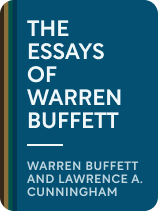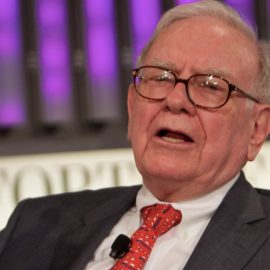

This article is an excerpt from the Shortform book guide to "The Essays of Warren Buffett" by Warren Buffett and Lawrence A. Cunningham. Shortform has the world's best summaries and analyses of books you should be reading.
Like this article? Sign up for a free trial here.
What is Warren Buffett’s approach to investing? What are the key pieces of Warren Buffett’s investment advice investors should take on board?
Warren Buffett’s investment approach goes against the grain of many financial professionals’. Buffett himself points out where his views and those of other investors disagree. Three specific points of contention are Efficient Market Theory, diversified portfolios, and the supposed value of financial advisers.
Keep reading to learn about the underpinnings of Warren Buffett’s approach to investing and how it differs from conventional practices.
Efficient Market Theory
Efficient Market Theory (EMT) is based on the premise that financial markets are inherently rational and all-knowing. Proponents of EMT believe that stock prices always reflect the actual value of their companies, making any deeper analysis irrelevant—stock price fluctuations are sufficient to determine a company’s overall health. Warren Buffett’s investment advice is to disregard EMT—he points to his history and those of his associates who have made their fortunes by assuming instead that researching a company reveals its true worth, and that stock fluctuations are largely meaningless except for the opportunities they provide. He feels that EMT has been sufficiently discredited so he finds it annoying that it’s still taught in business schools.
(Shortform note: In A Random Walk Down Wall Street, Malkiel defends Efficient Market Theory while claiming that it’s a misstatement to say that EMT’s predictions of stock prices are always correct. Malkiel suggests that stock market crashes validate Efficient Market Theory because they represent natural price corrections. However, EMT’s underlying implication that investors are rational actors was dealt a blow in 1975 by psychologists Daniel Kahneman and Amos Tversky. In The Undoing Project, Michael Lewis describes how the two psychologists overturned contemporary economic theory by proving that humans are fundamentally irrational, throwing a wrench into much of the economic research of their day.)
Diversification
Another financial sacred cow that Buffett scorns is the idea that diversifying your portfolio protects against risk. He argues that this concept originates from academic models that equate risk with volatility and use diversification as a means to minimize the total volatility in your investments. As in EMT, this theory takes nothing into account except stock price—if a good company’s stock were to suddenly drop, this mode of thinking would label it risky and tell you not to buy it. Buffett defines risk as the odds of suffering financial harm and says the best way to avoid it is to put most of your money on a few safe bets—companies with good management and excellent long-term economics, no matter their short-term stock fluctuations.
A glance at Berkshire Hathaway’s diversified holdings may make it look like Buffett doesn’t take his own advice. However, several factors must be noted. 1) As a holding company, Berkshire has far too much money to invest in only one place. 2) Most of its investments are in the form of majority shares in the businesses it owns—when Berkshire buys into a company, it commits a significant amount of capital instead of merely buying a few stocks as a hedge against market volatility. 3) Though Berkshire’s investments are widely diversified, Buffett’s personal holdings are not. Nearly all of Buffett’s wealth is in the form of Berkshire Hathaway stock.
Financial Advisers
Most of all, Buffett derides the culture of brokers and advisers who create and sell complicated financial instruments, encourage people to make trades often, and obfuscate any market clarity to convince investors that their services are needed. It’s said that the person who gets richest from a gold rush is the one selling the shovels. Likewise, the chief result of the efforts of brokers, advisers, and money managers is the transfer of wealth away from investors into the hands of “investment professionals,” skimmed off the top in the form of service fees. And while financial advisers and money managers claim they’ll be able to outperform the overall market, the vast majority of them will fail.
These professionals feed off both fear and optimism in the market in order to enrich themselves. The system incentivizes brokers and advisers to recommend more trades and more financial products even in times when investors would be wiser to let their money sit in an index fund with minimal fees. What’s worse, advisers bear none of the risk as their clients’ fortunes rise or fall.

———End of Preview———
Like what you just read? Read the rest of the world's best book summary and analysis of Warren Buffett and Lawrence A. Cunningham's "The Essays of Warren Buffett" at Shortform.
Here's what you'll find in our full The Essays of Warren Buffett summary:
- A glimpse into the mind of a man who disagrees with the typical Wall Street mogul
- Buffett's simple yet difficult insights on investing
- Why some of the most widely accepted economic practices are wrong






